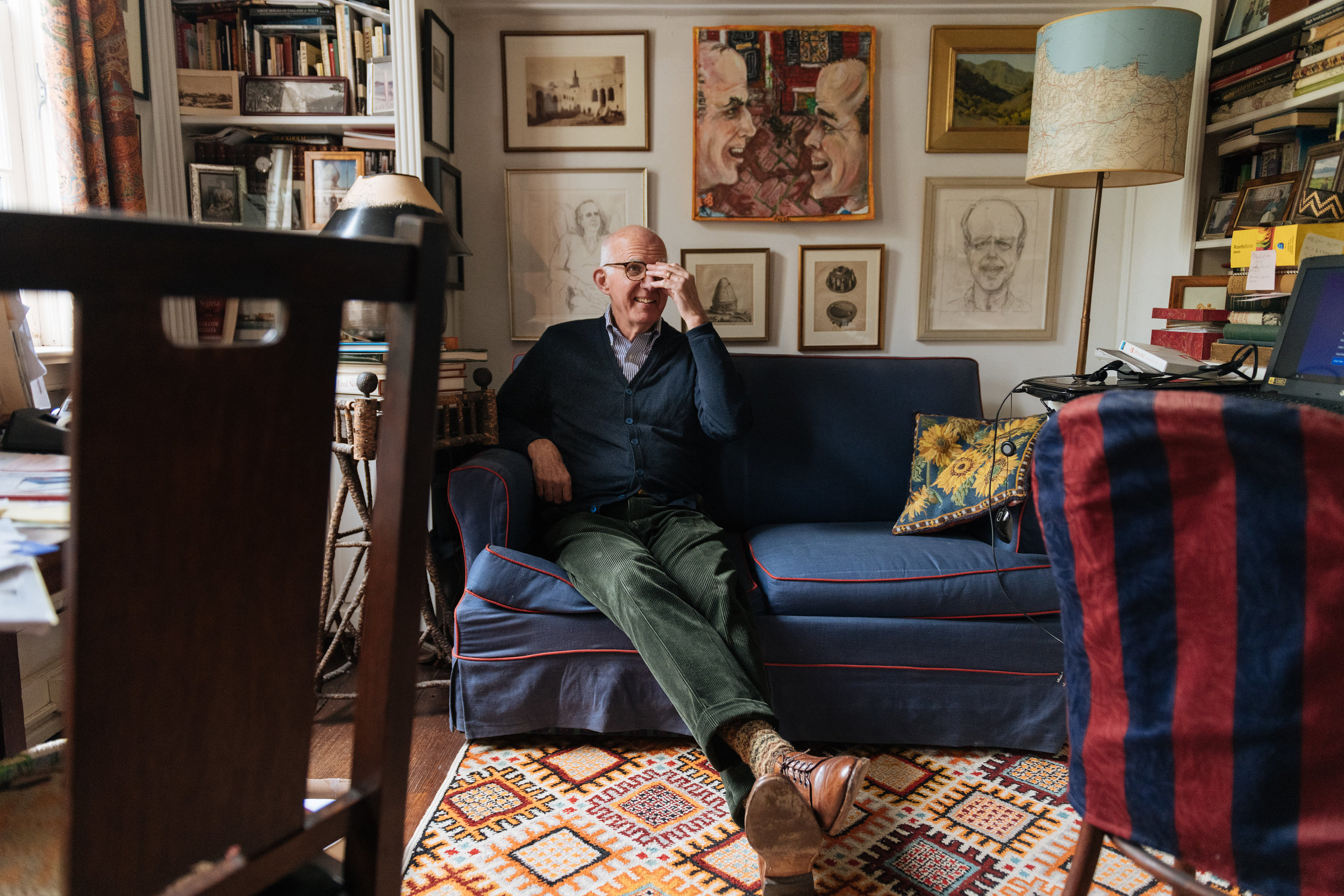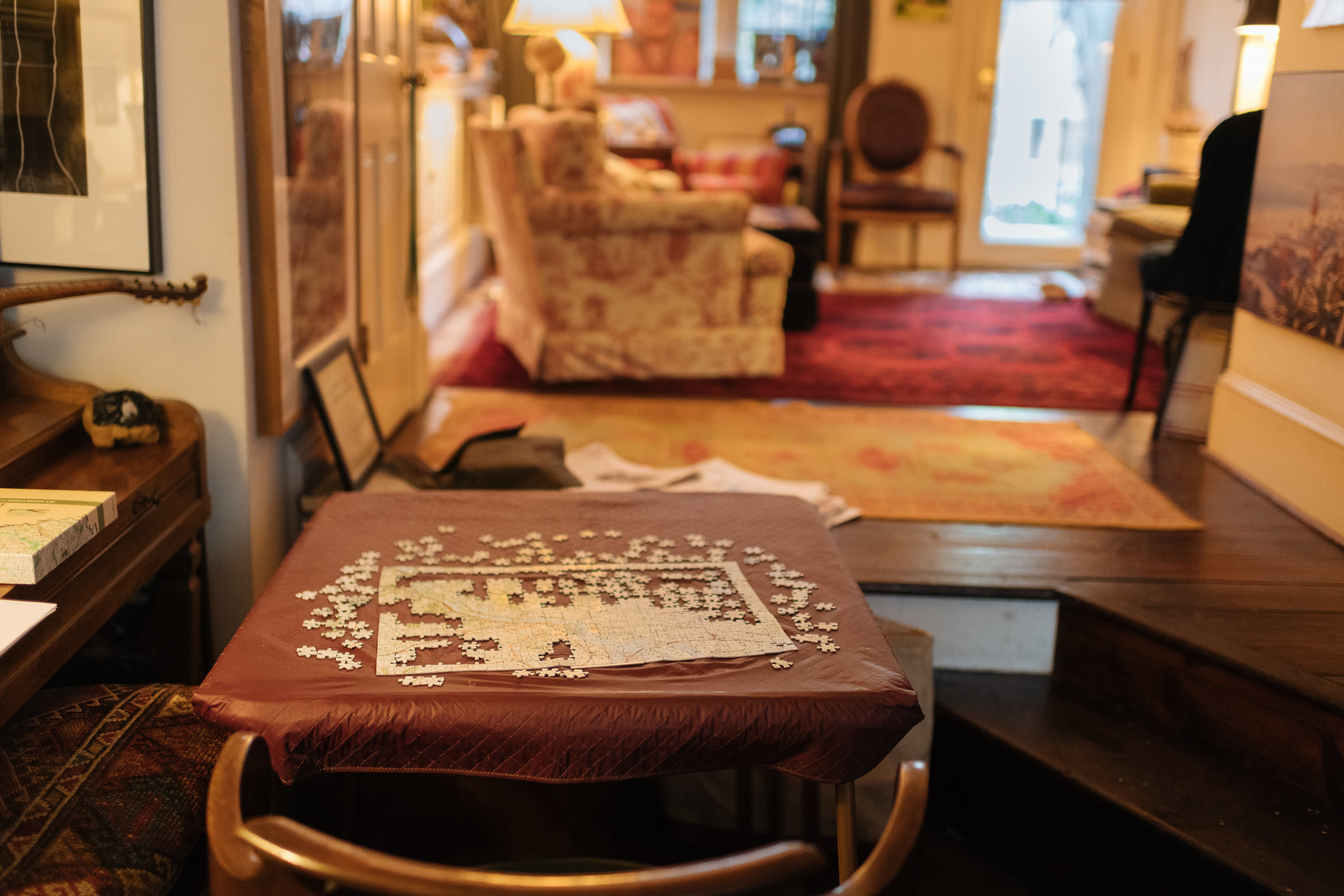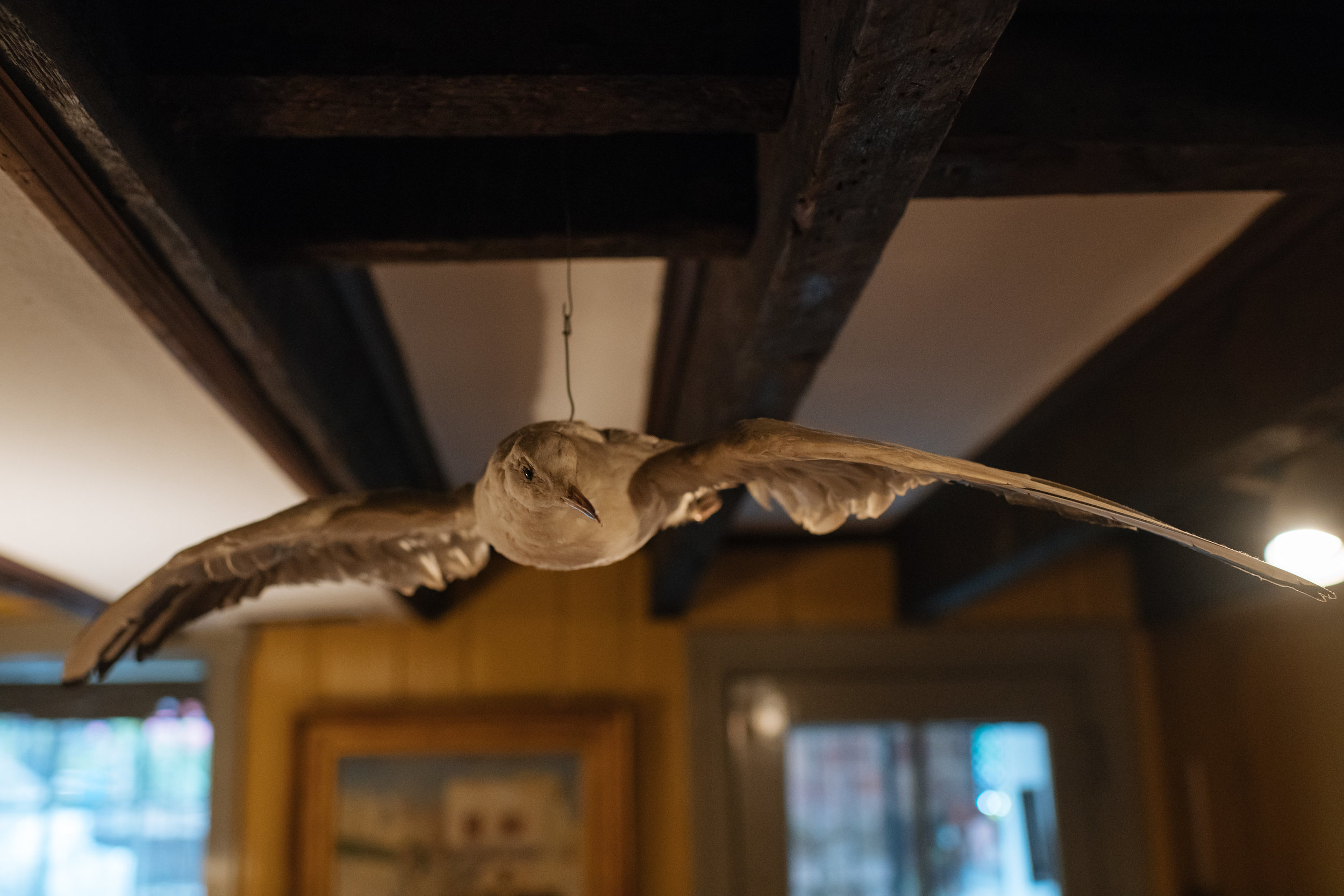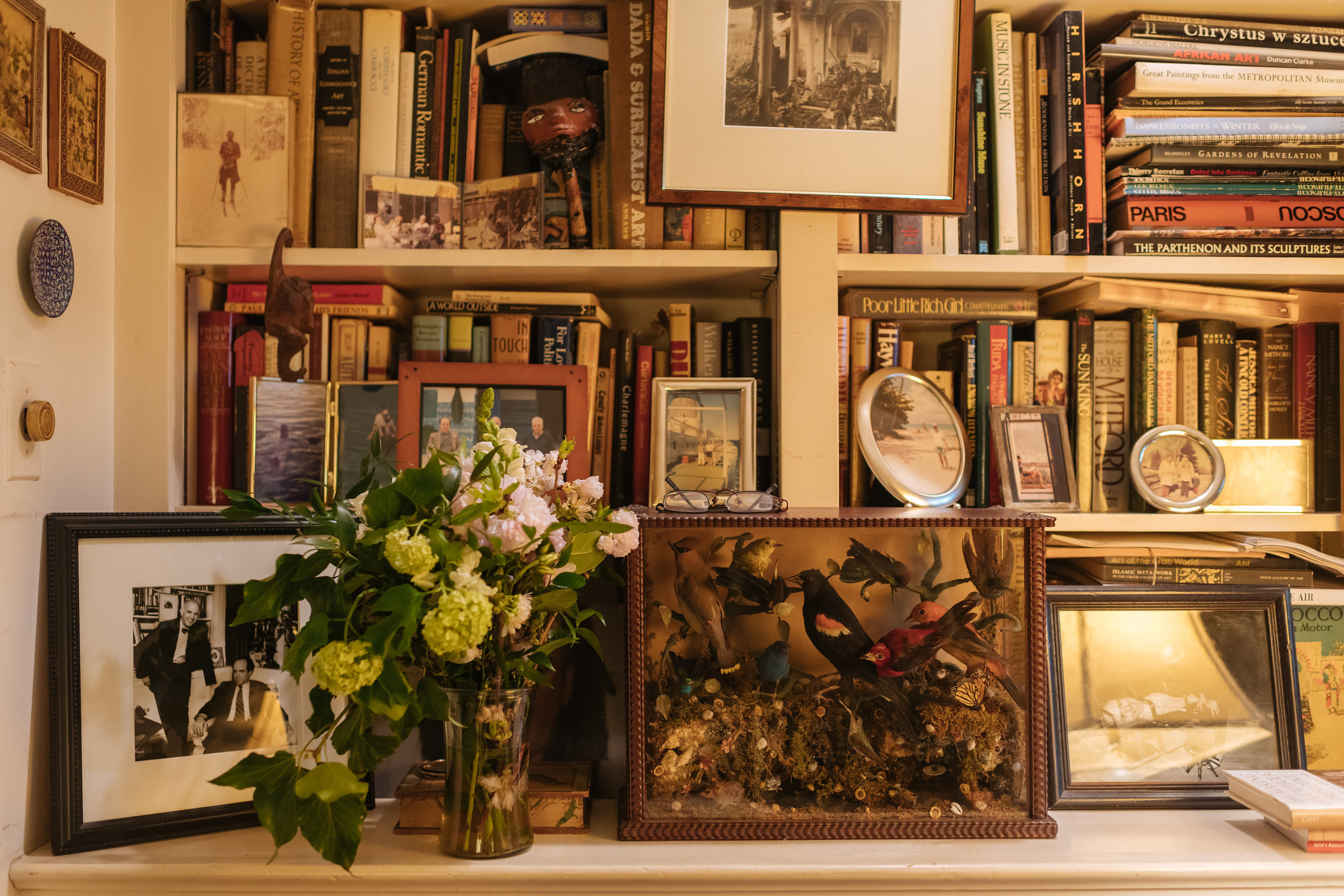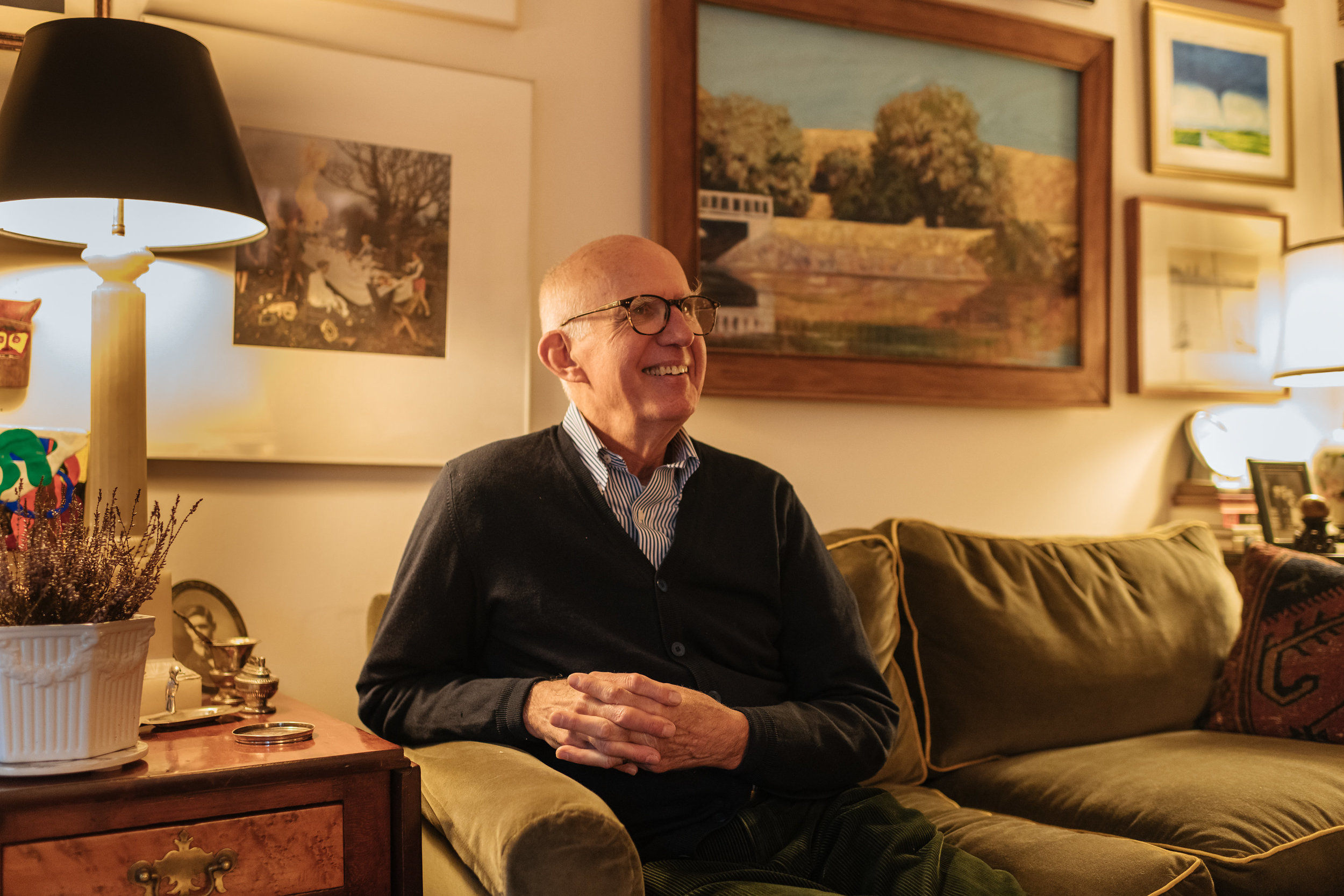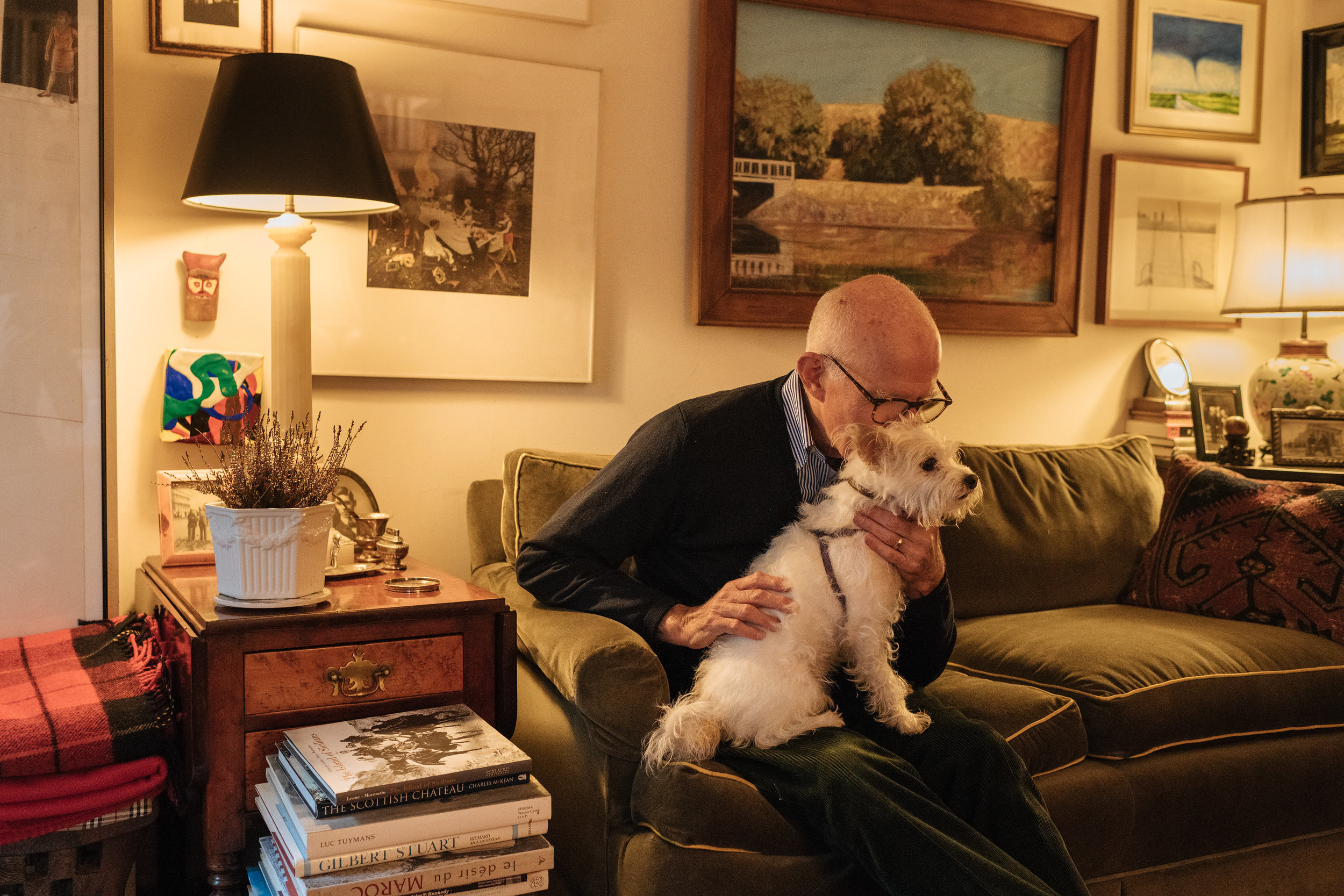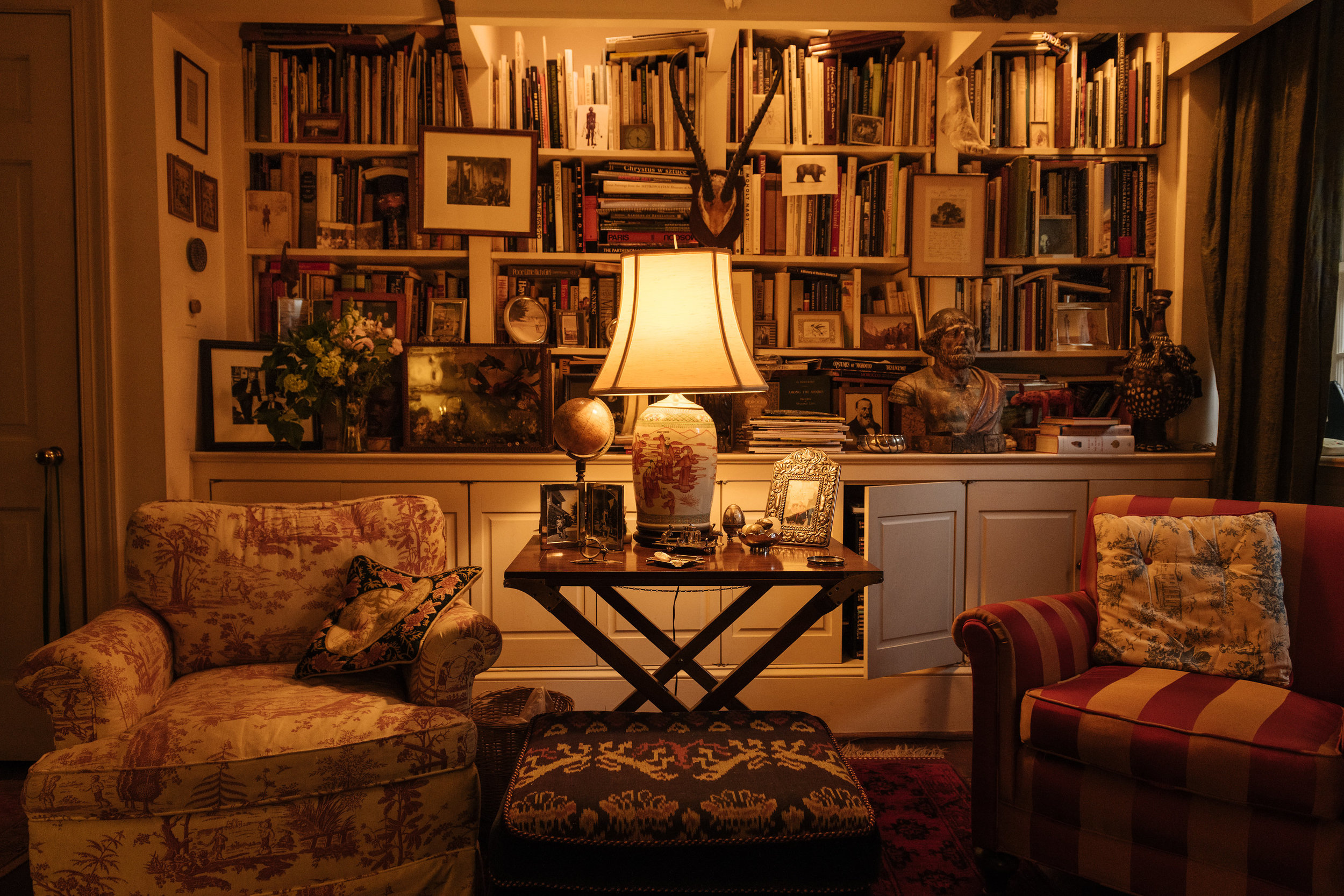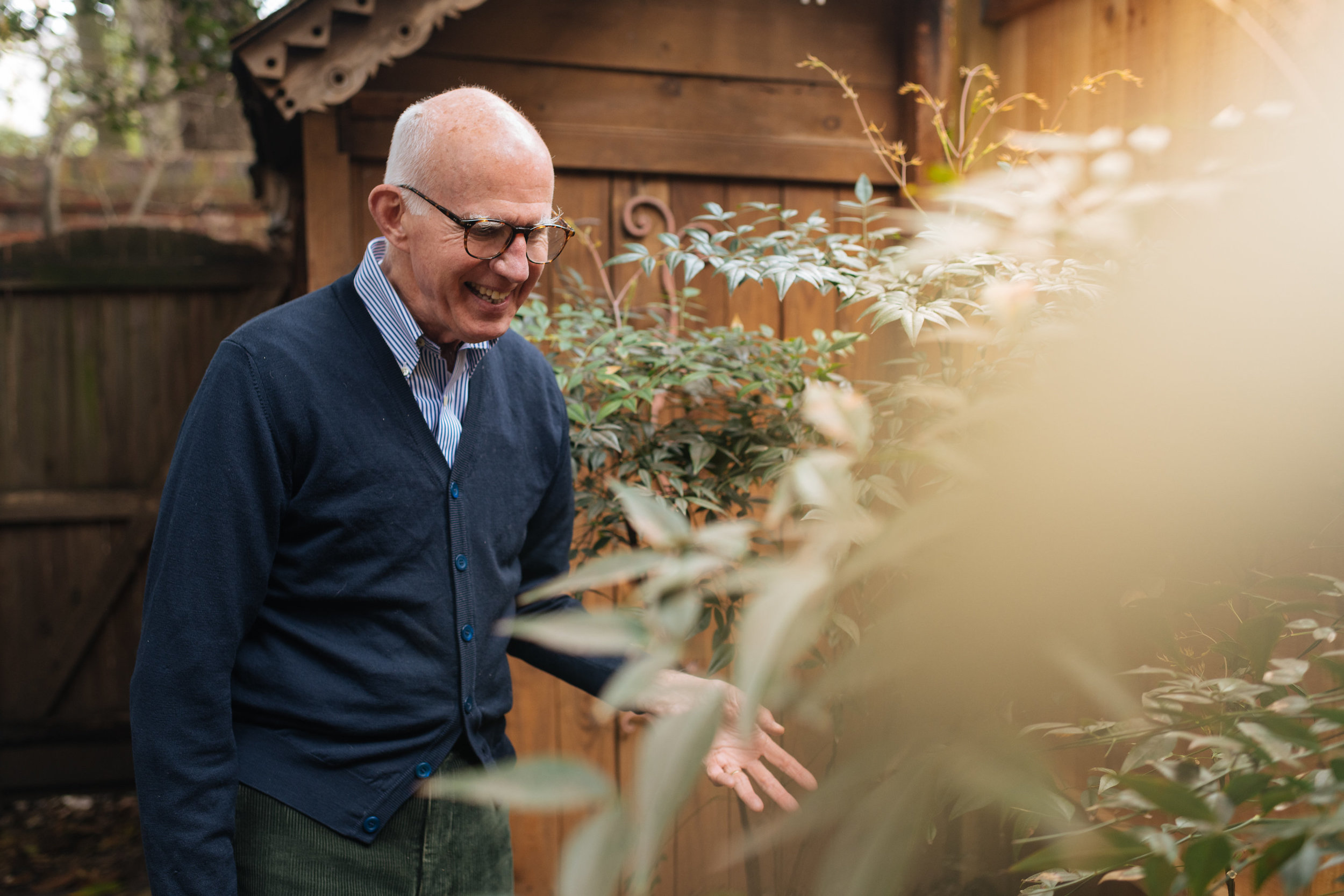‘I Love Sitting Around a Table Coming Up With Answers’
In the late 60s, Tom Birch moved to a tiny mountain village in Morocco—an American Peace Corps volunteer surrounded by families who’d been there for centuries.
‘There were maybe 500 people, and they just enjoyed each other’s lives. After living in Georgetown for a little while, I came to the conclusion that this is my Moroccan village recreated on the edge of the city of Washington. To me, that’s what community is. That’s what appeals to me about living here.’
As a law student at GW, Tom’s first introduction to Georgetown was through his pints at Le-Hi Grill—a bar on the corner of Dumbarton and Wisconsin Avenue, where &Pizza now sits.
‘There were these red leather banquettes along the wall, but what gave it its personality were these 8x10 framed photographs of people there in the 30s and 40s drinking and having a good time, stacked two or three high on the walls. It really spoke to the ‘bon ami’ of that corner of Georgetown.’
By the mid-80s, Tom was living in Kalorama with Sidney Lawrence—a local artist he’d met at a mutual friend’s dinner party and dated on and off for three years. Tom and Sidney—now married—couldn’t afford to buy in their neighborhood, but saw a for sale sign in Georgetown one Sunday afternoon after getting lunch at Martin’s Tavern.
‘I didn’t care for the house, but the real estate agent said there were a few others we could look at. I came around to 1240 29th St, and the minute I walked in it appealed to me. And my feeling then became that the only place I could find a house that I liked and could afford was in Georgetown. Which seems funny now.’
Tom and Sidney have been faithful residents for 31 years, and say the 200-year-old house with wide floor boards, three working fireplaces and original ceiling beams suits them.
Soon after they moved in, Tom began attending Citizens Association of Georgetown (CAG) meetings and organizing a neighborhood watch. After one such meeting, he was asked to host a similar gathering on his own block.
‘Without understanding to what I was being led, I suddenly had the job of organizing the other blocks. That was just a great way to get out and meet people.’
In 2000, a group of neighbors asked Tom to run for ANC commissioner. He said no, changing his mind a week later. Tom had years of experience on Capitol Hill, lobbying for the protection of children and federal funding for the arts. He knew a thing or two about running a campaign.
‘I was going to front-load the campaign, so I contacted a reporter at The Current. A week later here is this story about me, and no one else filed petitions to run, and it was ever thus.’
Tom was named Chairman during his second term. He loved the position, but struggled to do what he felt was justice to both his career and civic work without sacrificing either. Much to the dismay of city leaders, Tom didn’t run for a third term.
His ANC retirement didn’t last very long.
‘I missed working with the other commissioners. There was a great sense of collegiality. I loved the process—and this is what I loved on Capitol Hill—of people with different perspectives and ideas of how to achieve a solution sitting around a table and coming up with the answer. And that’s what our ANC presented.’
During a collective 14 years on the ANC, Tom focused on historic preservation—work he believes exemplified the heart and soul of Georgetown.
‘There’s this built environment that has been held together and has been honored, and not only presents a sense of history of this community, and the United States, but also attracts people from around the world. It’s absolutely dependent upon those of us who have any opportunity to get a say on it to preserve what we have here.’
Now retired again—though multiple committee appointments would suggest otherwise—Tom spends much of his time reading the newspaper, working with CAG to record oral histories of Georgetown residents, serving on the Federal Advisory Commission for the C&O Canal, and co-chairing a fundraising campaign for Georgetown Ministry Center.
‘I continue to be a person who has difficulty saying no when asked to do something.’
Sidney and he love to travel, and spend one month every summer renting a small house on the Northern tip of Denmark, where the Baltic and North Sea meet.
‘Travel is an important aspect of my make-up. I’ve always been intrigued by people whose outlook and perspective and culture is different from mine. It’s that sense of getting out of one’s self. We can step away from running into people every day on the street.’
In Georgetown, Tom means that quite literally. He’s never owned a car—‘a lifetime brag’—and finds friends (and former constituents) on every corner while on foot.
‘There’s this little grocery store here called Scheele’s Market, and it’s sort of our agora. It’s where we all come together and gossip, and lament or take joy in whatever has been happening that day out in the world. Whenever you’re going somewhere, you have to count into the fact that you might run into someone. That just adds to the joy of the day, but you do find yourself saying, ‘I have to run because I’m late for a meeting!’’
For a man of the world and former Hill lobbyist, Tom’s greatest pleasures seem to take root in his own tiny village.
‘My first year on the ANC, there was a parade on Wisconsin Avenue to celebrate the 250th anniversary of Georgetown. Well, I have to tell you, I’ve always wanted to march in a parade, and here it was in Georgetown, my dream come true. You’re walking along in the middle of the street and people are saying, ‘Hi Tom!’, and you wave, and it was just so much fun.’
Tom smiles, pushing up his glasses.
‘It’s too bad I won’t be here for the 300th anniversary.’
We’re not so sure.
